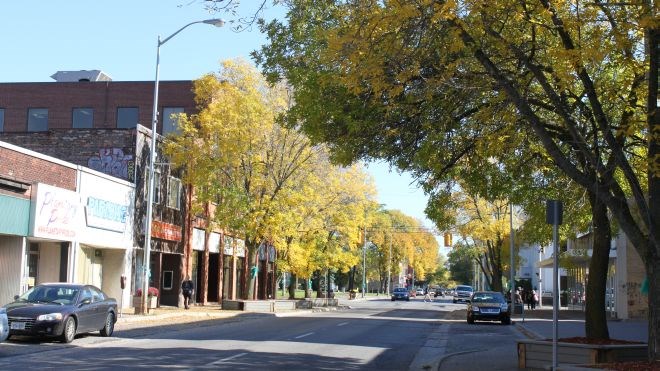A decade after Sault Ste. Marie first developed its downtown development initiative, the city is re-evaluating its priorities to put a fresh spin on how to rejuvenate the city core.
Kicking off 2016, the city looked back over the last 10 years to see how the city had fared over the last 10 years, using that as a stepping off point for the overhauled plan, said Victoria Prouse, project coordinator for the Sault’s Downtown Development Initiative.
The initial plan, outlined in 2006, focused on public realm investment and providing incentives for private development. In 10 years, the downtown had $84 million in investment, based on commercial and residential building permits.
“What we identified was that there has been a lot of momentum downtown — we’ve seen a lot of really cool things happening — but we’re still facing these systemic issues of vacancies, a lack of connection or feeling a sense of place to the downtown,” she said.
“We have a very distinct population — over one-third are seniors, 40 per cent live alone, and nearly half are low income — so creating a more balanced downtown neighbourhood is also a priority.”
The result, following extensive public consultation, is a new strategy that includes six pillars for action.
The first priority is to preserve the downtown as a city core, recognizing that having people, activity, and business concentrated in an area helps to create a well-defined area.
Secondly, the city wants to develop more residential options for the downtown.
With the third pillar, the city wants to encourage more programming and activities in the downtown core. This includes making it easier for outside organizations to host events, and streamlining protocols governing things like downtown patios to make them easier to access.
“One thing that the planning department has come to realize is that we can't just build a beautiful space and then be done with it, walk away; it's really only the start,” Prouse said.
“And to get people comfortable with the space, to get people to develop that sense of attachment to the space, we need to create activities and opportunities for them to engage in that space, so that's also very important for us.”
The fourth pillar involves continuing to invest in public sector spaces to encourage private investment. The theory, said Prouse, is that the city can’t expect private developers to invest in the space if the city won’t invest itself.
So, the city has started investing in the public realm, such as a recent revitalization of Gore Street, an area that had been looking shabby and faced a negative stigma for some time.
“We’ve made it the most beautiful street in the city now, so we’re hoping that we’ll see investment follow that,” Prouse said.
Enhancing mobility and connectivity is the fifth pillar of the plan, which involves making the downtown a place that is easily accessible by walking and biking.
The city will be undertaking a complete streets evaluation, which will assess the streets to determine how they can be redesigned to prioritize pedestrians. One idea currently on the table is converting the streets from one-way traffic to two-way traffic.
The plan’s final pillar is taking action, which includes creating a downtown task force that will guide the implementation of the strategy and ensure it continues.
To get started, the planning department has requested $200,000 from the city, which would allow it to seek matching funds from the NOHFC and FedNor and get started on the studies that will be required. If approved, the planning department will then aim to start on the bigger projects in 2018.
Estimated costs for the capital works projects identified in the strategy — which include streetscaping on Queen Street and redeveloping Bay Street — total $16.8 million. Prouse said the department will initially look for a combined $2.5 million from the city, NOHFC and FedNor, and funds for the larger projects would have to be set aside in future budgets.
“It all comes down to whether council sees it a priority to make these transformative investments in the downtown, and then allocate money accordingly,” she said.
In the past, she noted, cities like Sault Ste. Marie would rely on attracting smokestack industry to generate employment and economic development for the city. But this new approach concentrates on investing in the space, which helps promote small business, while focusing on the characteristics that make Sault Ste. Marie as a unique, attractive place to live.
“If we’re investing in things that make us look like any other city, then it doesn’t really make a case for wanting to move to Sault Ste. Marie,” Prouse said.
“(The strategy is about) accentuating our comparative advantage in terms of sense of place and what we have here.”




